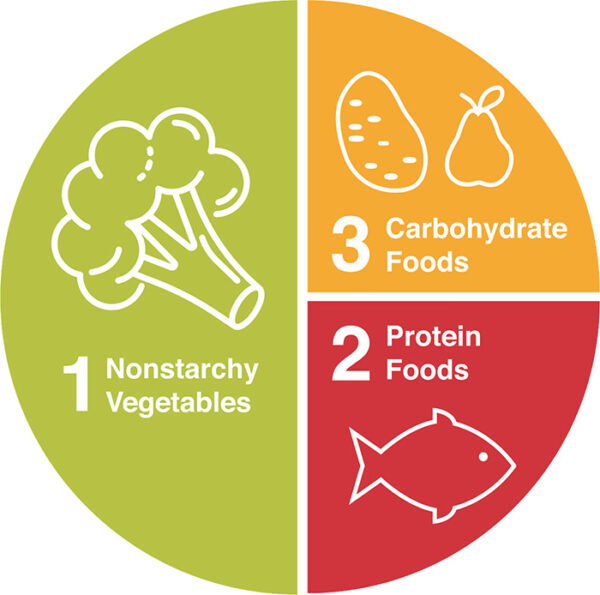Take the Steps Necessary to Live Well with Diabetes

World Diabetes Day, the world’s largest diabetes awareness campaign, is observed annually on Nov. 14. With this year’s theme of “Diabetes and Well-being,” it is taking a global view of diabetes given new, emerging immigrant and refugee populations.
Diabetes is a disease that occurs when your blood glucose, also called blood sugar, is too high. In addition to genetics, risk factors include smoking, obesity, physical inactivity, high blood pressure, high cholesterol, and an unhealthy diet of too many processed foods and sugary beverages. Diabetes can be difficult to control and can lead to multiple health problems, such as heart disease, nerve damage, eye problems, and kidney disease.
An estimated 38.4 million people in the United States, or 11.6% of the population, have diabetes, according to the Centers for Disease Control and Prevention’s National Diabetes Statistics Report. Racial and ethnic minority populations suffer the disease at disproportionately high rates: American Indian/Alaska Native (16%), Black (12.5%), Native Hawaiian/Pacific Islander (11.7%), Hispanic (10.3%), and Whites (8.5%). In addition, an estimated 97.6 million U.S. adults have prediabetes, which means their blood glucose levels are higher than normal but not high enough to be diagnosed as diabetes.
About one in five U.S. adults with diabetes don’t even know they have it. They may lack access to affordable health care, essential medicines, or healthy foods due to high costs.
Well, you might ask, is there any good news? Yes! There are multiple steps you can take steps to prevent or manage diabetes.
I’ve lived with diabetes for more than 15 years and a chronic condition like this definitely requires self-management. I cannot expect my healthcare provider to make decisions or choices for me, but I can decide what steps to take to manage my diabetes – and that includes lifestyle choices. It’s the decisions we make every day that contribute to our health and wellness.
Here are some ways to avoid or manage diabetes:
Medications — Take all prescribed medications as ordered by your healthcare provider. This includes oral medication and injectable medications, like insulin.
 Nutrition — Follow a healthy food plan that includes eating balanced, nutritious meals. The American Diabetes Association has a tool for improving variety and healthy portion sizes called the Plate Method. It includes filling half your plate with non-starchy vegetables, one-quarter with carbohydrates, one-quarter with proteins, and dairy and fruit are off to the side.
Nutrition — Follow a healthy food plan that includes eating balanced, nutritious meals. The American Diabetes Association has a tool for improving variety and healthy portion sizes called the Plate Method. It includes filling half your plate with non-starchy vegetables, one-quarter with carbohydrates, one-quarter with proteins, and dairy and fruit are off to the side.
Physical activity — I know. Many folks tell me they don’t like the word “exercise.” But physical activity is important for managing our diabetes. Even a 5-10 minute walk a few times per day can reap great benefits. Start out slow, and then increase your steps. You got this!
Stress Management — Coping with one or more chronic conditions can be challenging, so it’s important to take steps to manage stress. Some ways to do so include deep breathing, meditation, prayer, yoga, guided imagery, mindfulness, massage, doing a fun hobby, and getting support when needed.
Testing
- The Fasting Plasma Glucose (FPG) test checks your fasting blood sugar levels. A reading between 100 and 126 mg/dL indicates prediabetes, and 126 mg/dL or higher indicates diabetes.
- An A1C or HbA1c test measures the average blood sugar over the past three months. Get tested on a regular basis or at a frequency determined by your healthcare provider. The goal for most diabetics is an A1C level of 7% or lower.
- Self-testing using a blood glucose meter or fingerstick. This test can help you see the highs and lows of your blood sugar before eating, after a meal, after exercise, etc. A normal reading is between 70-99 mg/dL for a fasting blood sugar.
Other Resources and Supports
- The U.S. Department of Veterans Affairs (VA) offers a dynamic program in which people with diabetes gain knowledge, self-management skills and support to make changes to their lifestyles. It is an interactive process for people with diabetes, the caregiver or family, and a Certified Diabetes Care and Education Specialist (CDCES). Learn more at the VA’s Diabetes Health Library.
- The Living Well Diabetes Self-Management Program was developed by Stanford University and is offered in person or virtually, and covers topics such as healthy eating, meal planning, managing blood glucose, stress management, using medications appropriately, and disease management. Check out the program’s library of helpful videos.
I love poems, poetry, and quotes, and I found this excellent quote by Viola Davis:
“Anything can be achieved with a good, healthy dose of courage.”
Take care, be strong, and know with courage you can take steps to live life to the fullest, even with a diabetes diagnosis.
 Contributor Mary Pat O’Leary, RN, BSN and a senior planner with Aging and Disability Services, the Area Agency on Aging for Seattle-King County.
Contributor Mary Pat O’Leary, RN, BSN and a senior planner with Aging and Disability Services, the Area Agency on Aging for Seattle-King County.
![AgeWise King County [logo]](https://www.agewisekingcounty.org/wp-content/themes/agewisekingcounty/images/logo.png)